The Ultimate Guide to Korean Skincare Ingredients: Unlocking the Secrets of K-Beauty in 2024

Welcome to the wonderful world of Korean skincare ingredients! 🌟 If you've ever wondered how K-beauty enthusiasts achieve that enviable "glass skin" glow, you're in for a treat. Did you know that the global Korean beauty market is projected to reach a staggering $31.6 billion by 2029? That's right – the K-beauty revolution is in full swing, and it's all thanks to the incredible ingredients at its core.
In this ultimate guide, we'll dive deep into the fascinating realm of Korean skincare ingredients. From age-old natural remedies to cutting-edge innovations, we'll uncover the secrets that have made K-beauty a global phenomenon. So, grab your favorite sheet mask, and let's embark on a journey to radiant, healthy skin!
The Foundation of Korean Skincare: Natural Ingredients
Korean skincare has long been rooted in the power of nature. For centuries, Koreans have harnessed the benefits of herbs, plants, and other natural ingredients to nourish and protect their skin. This tradition continues today, with modern K-beauty brands combining time-tested natural ingredients with cutting-edge science to create effective, gentle skincare products.
Traditional Herbs and Botanicals
Many of the ingredients you'll find in Korean skincare products have been used for generations. Here are some of the most popular:
- Ginseng: Known for its anti-aging properties, ginseng has been a staple in Korean medicine and skincare for thousands of years.
- Green Tea: Packed with antioxidants, green tea helps protect the skin from environmental damage and reduces inflammation.
- Mugwort: This herb is prized for its soothing and detoxifying properties, making it great for sensitive and acne-prone skin.
- Camellia Oil: Derived from camellia flowers, this oil is rich in antioxidants and fatty acids, providing deep hydration and anti-aging benefits.

The K-Beauty Philosophy: Balance and Harmony
Korean skincare isn't just about slathering on products – it's a holistic approach to skin health. The K-beauty philosophy emphasizes:
- Gentle, non-irritating formulations
- Layering products for optimal absorption and effectiveness
- Consistency and prevention rather than aggressive treatments
- Hydration as the foundation of healthy skin
This approach allows for the use of potent natural ingredients without overwhelming the skin, resulting in products that are both effective and kind to your skin.
Hydration Heroes: Ingredients That Quench Your Skin's Thirst
One of the cornerstones of Korean skincare is intense hydration. K-beauty understands that well-hydrated skin is healthy skin, capable of better defending itself against environmental stressors and signs of aging. Let's explore some of the superstar hydrating ingredients you'll find in Korean skincare products.
Hyaluronic Acid: The Moisture-Binding Superstar
Hyaluronic acid is perhaps the most well-known hydrating ingredient in skincare, and for good reason. This powerful humectant can hold up to 1000 times its weight in water, making it incredibly effective at plumping and hydrating the skin.
In Korean skincare, you'll find hyaluronic acid in various forms:
- Low molecular weight hyaluronic acid for deeper penetration
- High molecular weight hyaluronic acid for surface hydration
- Multi-weight hyaluronic acid complexes for comprehensive hydration
Pro tip: Look for products that combine hyaluronic acid with other hydrating ingredients for even better results!

Beta-Glucan: The Lesser-Known Hydration Powerhouse
While hyaluronic acid gets most of the hydration spotlight, beta-glucan is another incredibly effective moisturizing ingredient popular in K-beauty. Derived from oats or yeast, beta-glucan is:
- More hydrating than hyaluronic acid (yes, really!)
- An excellent skin-soother
- A powerful antioxidant
Beta-glucan forms a protective film on the skin, locking in moisture and protecting against environmental stressors. It's especially beneficial for sensitive or irritated skin.
Glycerin: The Unsung Hero of Hydration
Glycerin might not sound as exciting as some other ingredients, but it's a crucial component in many Korean skincare formulations. This humble ingredient:
- Attracts water to the skin
- Helps other ingredients penetrate more effectively
- Improves the overall texture of skincare products
You'll often find glycerin working alongside other hydrating ingredients to create deeply moisturizing formulas that leave your skin soft, plump, and glowing.
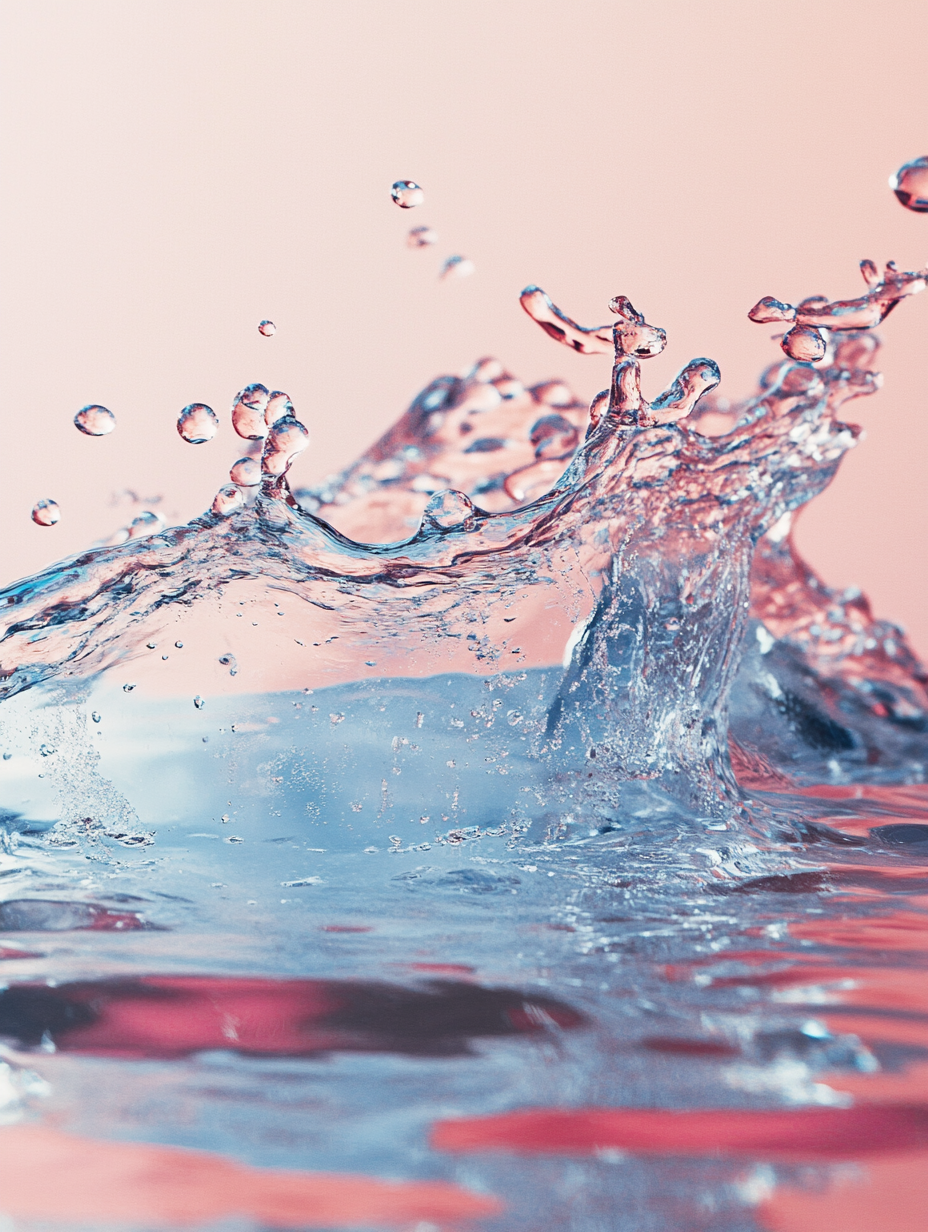
Brightening and Even-Toning Ingredients in K-Beauty
Achieving a bright, even-toned complexion is a major goal in Korean skincare. Rather than harsh bleaching agents, K-beauty focuses on gentle, effective ingredients that work to fade discoloration and boost overall skin radiance.
Niacinamide: The Multi-Tasking Skin-Brightening Ingredient
Niacinamide, also known as vitamin B3, is a true skincare powerhouse. Its benefits include:
- Reducing the appearance of hyperpigmentation
- Regulating sebum production
- Strengthening the skin barrier
- Minimizing the appearance of pores
Korean skincare products often feature niacinamide in concentrations between 2-5%, which is effective without being irritating. You'll find it in everything from toners to serums to moisturizers.
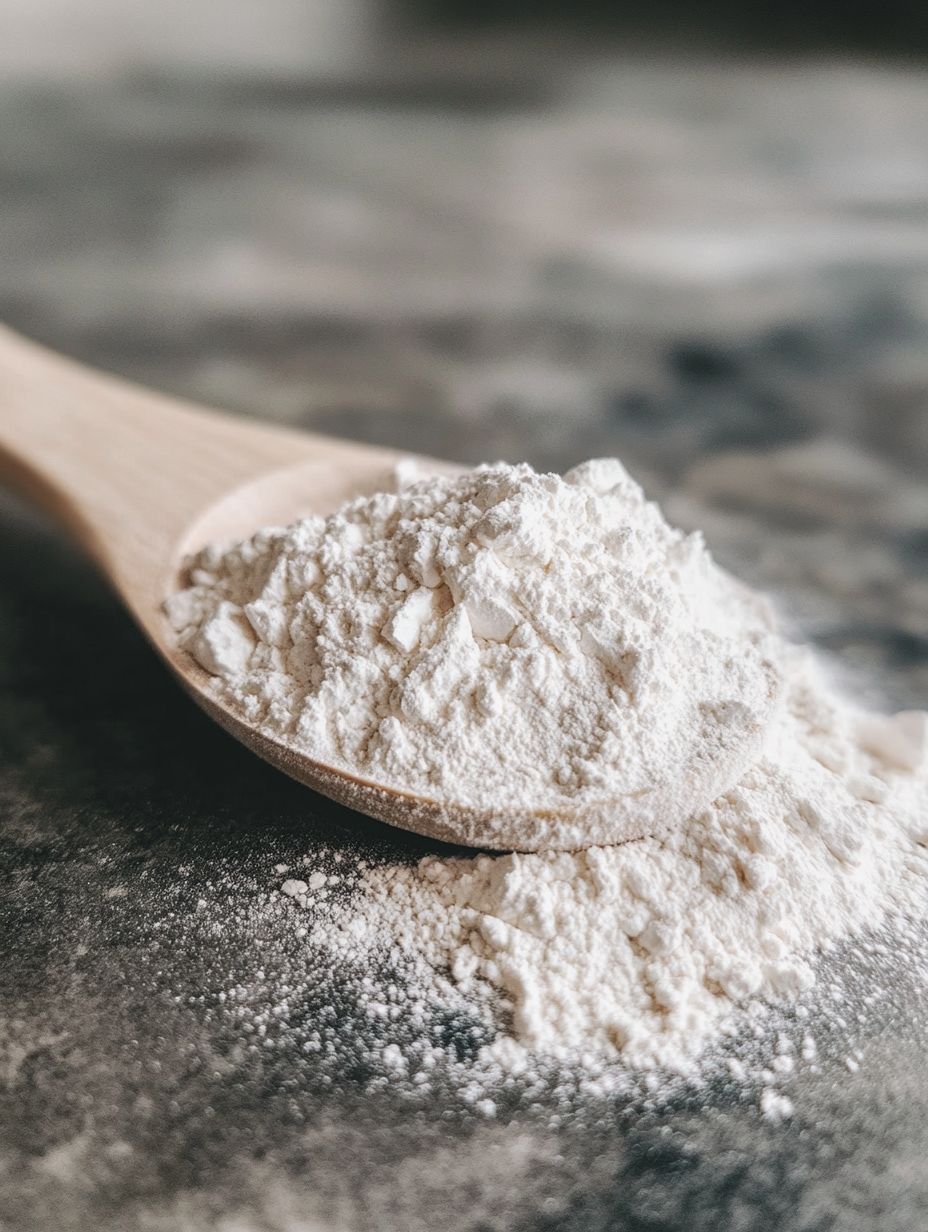
Vitamin C: The Brightening Antioxidant
Vitamin C is renowned for its brightening and antioxidant properties. However, it can be unstable and irritating in its pure form (L-ascorbic acid). Korean skincare often uses gentler, more stable vitamin C derivatives such as:
- Ascorbyl Glucoside
- Ethyl Ascorbic Acid
- Tetrahexyldecyl Ascorbate
These derivatives offer the brightening benefits of vitamin C with less risk of irritation, making them suitable for daily use and sensitive skin types.

Licorice Root Extract: Nature's Skin-Lightening Agent
Licorice root extract is a popular natural ingredient in Korean skincare, prized for its skin-brightening properties. It works by:
- Inhibiting melanin production
- Reducing inflammation
- Providing antioxidant protection
Licorice root is especially effective for fading post-inflammatory hyperpigmentation, such as acne scars. It's gentle enough for sensitive skin and can be used alongside other brightening ingredients for enhanced results.
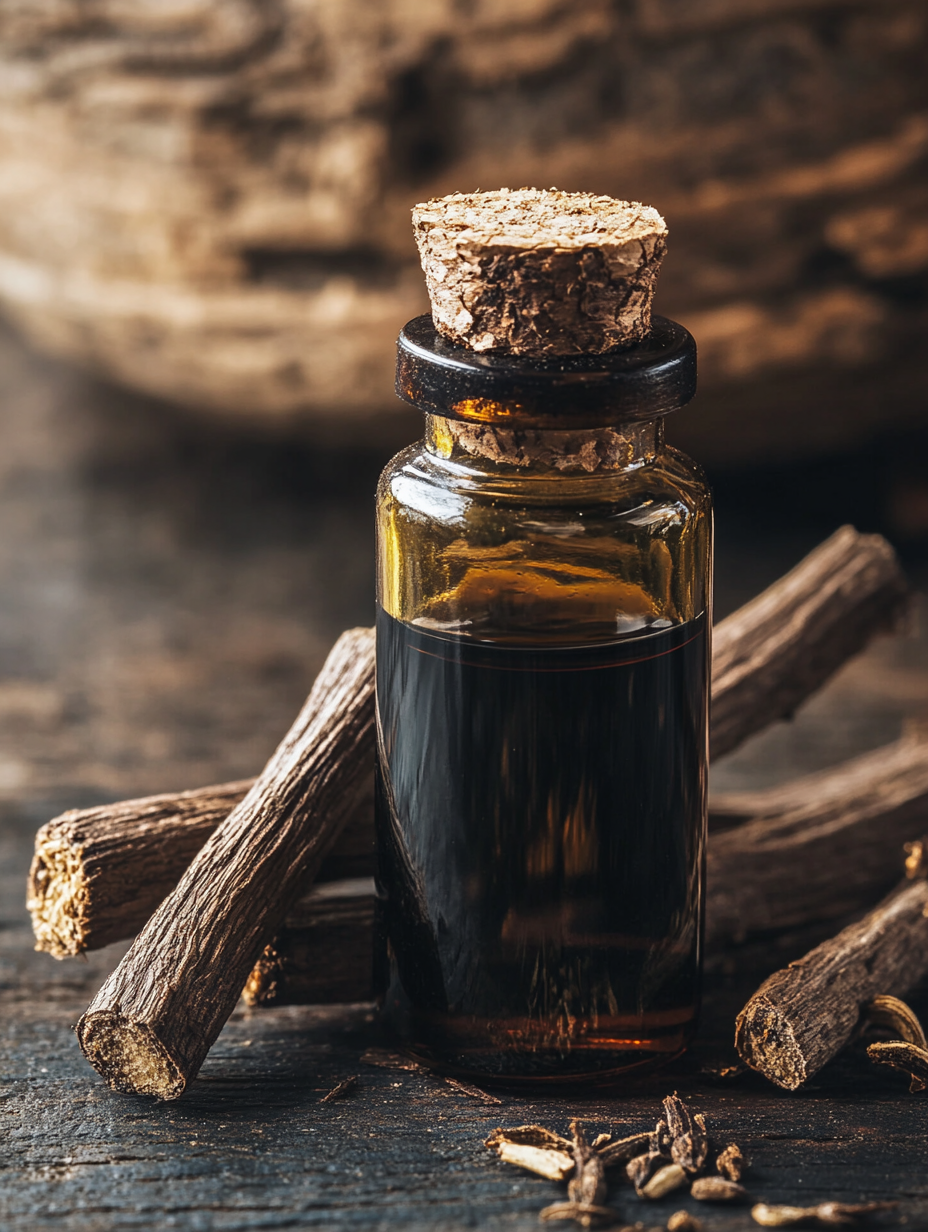
Fermented Ingredients: The Secret Weapon of Korean Skincare
Fermentation isn't just for kimchi! This traditional process has made its way into skincare, becoming a hallmark of many Korean beauty products. But what exactly does fermentation do for your skin?
The Science Behind Fermentation in Skincare
During the fermentation process, natural ingredients are broken down by microorganisms, resulting in:
- Smaller molecular size, allowing for better skin penetration
- Increased concentration of beneficial compounds
- Creation of new beneficial ingredients (like probiotics)
This process makes fermented skincare ingredients more potent and often more easily absorbed by the skin.
Popular Fermented Ingredients in K-Beauty
- Galactomyces Ferment Filtrate: A byproduct of sake fermentation, this ingredient is known for its brightening and anti-aging properties.
- Bifida Ferment Lysate: A probiotic ingredient that strengthens the skin barrier and improves resilience against environmental stressors.
- Fermented Rice Water: Rich in vitamins and minerals, fermented rice water brightens and softens the skin.
- Lactobacillus Ferment: Another probiotic ingredient that soothes the skin and helps maintain a healthy skin microbiome.

Benefits of Fermented Ingredients for Skin Health
Incorporating fermented ingredients into your skincare routine can lead to:
- Improved skin texture and radiance
- Enhanced absorption of other skincare products
- Strengthened skin barrier function
- Reduced sensitivity and inflammation
Many Korean essence products, often considered the heart of the K-beauty routine, feature fermented ingredients as their star components.
Snail Mucin: The Unexpected Star of K-Beauty
One of the most unique and buzzworthy ingredients in Korean skincare is snail mucin. Yes, you read that right – snail slime is a prized skincare ingredient! Before you wrinkle your nose, let's explore why this unusual ingredient has become a K-beauty favorite.
What is Snail Mucin and How is it Sourced?
Snail mucin, also known as snail secretion filtrate, is the slimy substance that snails produce to protect their skin and heal wounds. In skincare, it's ethically sourced from snail farms where the snails are kept in a stress-free environment. The mucin is collected as the snails move over mesh nets, ensuring no harm comes to the snails.
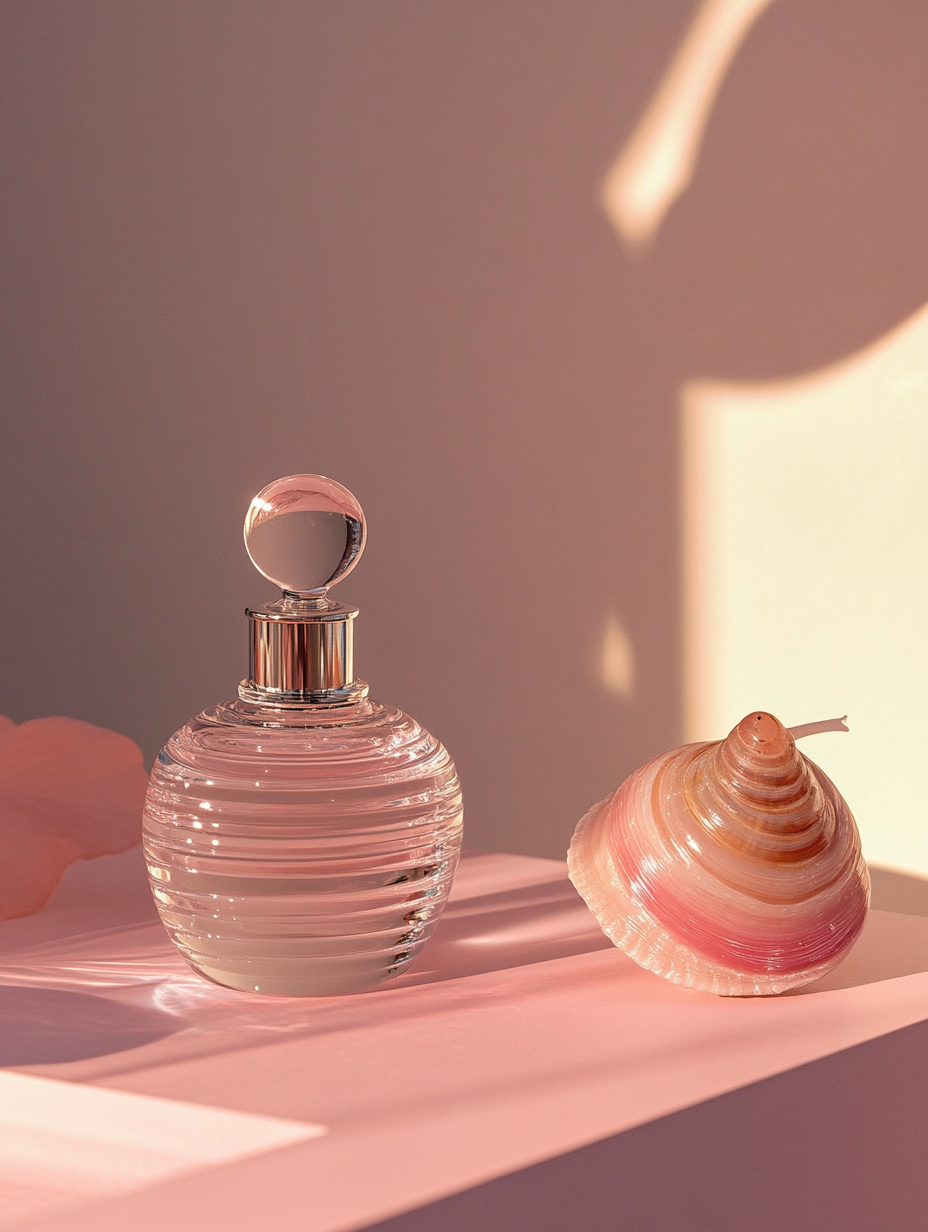
The Incredible Benefits of Snail Mucin for Skin
Snail mucin is packed with beneficial compounds, including:
- Glycoproteins: Promote cell renewal and wound healing
- Hyaluronic Acid: Provides intense hydration
- Glycolic Acid: Gently exfoliates and brightens the skin
- Antimicrobial peptides: Help fight acne-causing bacteria
These components work together to provide a range of skin benefits:
- Hydration: Snail mucin is incredibly moisturizing, helping to plump and soften the skin.
- Healing: It can help speed up wound healing and reduce the appearance of acne scars.
- Anti-aging: The regenerative properties of snail mucin can help reduce the appearance of fine lines and wrinkles.
- Soothing: It has anti-inflammatory properties, making it great for sensitive or irritated skin.
Top Korean Skincare Products Featuring Snail Mucin
If you're intrigued by the benefits of snail mucin, here are some popular Korean products to try:
- COSRX Advanced Snail 96 Mucin Power Essence: A lightweight essence with 96% snail secretion filtrate.
- Mizon All In One Snail Repair Cream: A multipurpose cream that hydrates, repairs, and fights signs of aging.
- Benton Snail Bee High Content Essence: Combines snail mucin with bee venom for enhanced skin-soothing benefits.
Remember, while snail mucin is generally well-tolerated, it's always a good idea to patch test new products, especially if you have sensitive skin or allergies.
Centella Asiatica: Nature's Skin-Soothing Miracle
Centella Asiatica, also known as Gotu Kola or Tiger Grass, has been used in traditional medicine for centuries. In recent years, it's become a superstar ingredient in Korean skincare, prized for its healing and soothing properties.
The History and Traditional Uses of Centella Asiatica
Centella Asiatica has a long history of use in Asian countries, including Korea, China, and India. Traditionally, it was used to:
- Heal wounds and burns
- Improve circulation
- Reduce inflammation
- Boost cognitive function
In Korean skincare, Centella Asiatica is often referred to as "cica," short for cicatrization (the formation of new tissue).

How Centella Asiatica Calms and Repairs the Skin
Centella Asiatica contains several active compounds that benefit the skin:
- Madecassoside: Reduces inflammation and promotes collagen synthesis
- Asiaticoside: Helps wound healing and strengthens the skin barrier
- Asiatic Acid: Has antioxidant properties and fights signs of aging
- Madecassic Acid: Soothes irritation and supports skin hydration
These components work together to:
- Calm irritated or sensitive skin
- Speed up wound healing
- Boost collagen production
- Improve skin elasticity
- Protect against environmental damage
Different Forms of Centella in K-Beauty Products
You'll find Centella Asiatica in various forms in Korean skincare products:
- Centella Asiatica Extract: The most common form, often listed as "Centella Asiatica Extract" on ingredient lists.
- TECA (Titrated Extract of Centella Asiatica): A purified form containing a high concentration of the plant's active compounds.
- Centella Leaf Water: A gentler form that still provides soothing benefits.
- Individual Components: Some products feature isolated compounds like madecassoside for targeted benefits.
Popular K-beauty products featuring Centella Asiatica include:
- Dr. Jart+ Cicapair Tiger Grass Color Correcting Treatment
- Purito Centella Green Level Buffet Serum
- COSRX Pure Fit Cica Serum
Centella Asiatica is especially beneficial for those with sensitive, acne-prone, or redness-prone skin. It's also great for anyone looking to strengthen their skin barrier or combat signs of aging.
Ginseng: The Anti-Aging Powerhouse in Korean Skincare
Ginseng has been a cornerstone of Korean traditional medicine for thousands of years, and it's no surprise that it's also a star ingredient in Korean skincare. Known for its revitalizing and anti-aging properties, ginseng is a powerhouse ingredient that offers multiple benefits for the skin.

The Long-Standing History of Ginseng in Korean Culture
Ginseng, particularly Korean Red Ginseng, has been cultivated in Korea for over 1,500 years. It's so valued that it was once used as currency and was considered a luxury item reserved for royalty. In traditional medicine, ginseng was used to:
- Boost energy and vitality
- Improve cognitive function
- Strengthen the immune system
- Promote longevity
Its transition into skincare was a natural evolution of its perceived health benefits.
Anti-Aging Benefits of Ginseng in Skincare
Ginseng offers a multitude of benefits for the skin, particularly when it comes to anti-aging:
- Boosts Collagen Production: Ginseng stimulates collagen synthesis, helping to reduce the appearance of fine lines and wrinkles.
- Improves Skin Elasticity: The saponins in ginseng help improve skin firmness and elasticity.
- Brightens Skin Tone: Ginseng has been shown to inhibit melanin production, helping to even out skin tone and reduce dark spots.
- Provides Antioxidant Protection: Ginseng is rich in antioxidants, which help protect the skin from free radical damage.
- Improves Blood Circulation: Better circulation means more nutrients are delivered to your skin cells, promoting a healthy, radiant complexion.
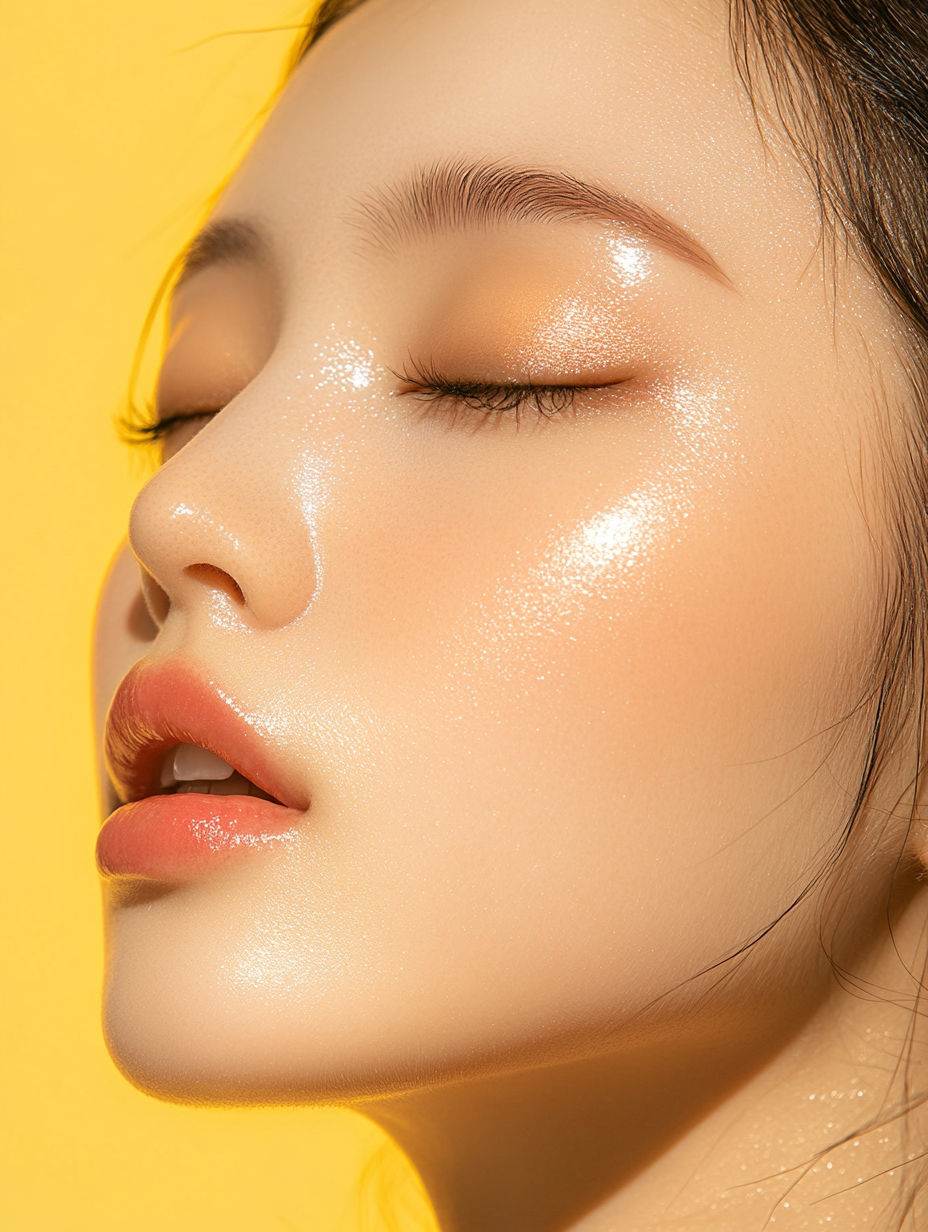
How Ginseng is Incorporated into Modern K-Beauty Formulations
You'll find ginseng in various forms in Korean skincare products:
- Ginseng Extract: The most common form, often derived from Korean Red Ginseng.
- Ginseng Oil: A potent, concentrated form that's rich in vitamins and minerals.
- Fermented Ginseng: Believed to have enhanced absorption and efficacy.
Popular K-beauty products featuring ginseng include:
- Sulwhasoo Concentrated Ginseng Renewing Cream
- Beauty of Joseon Ginseng Essence Water
- I'm From Ginseng Serum
Ginseng is particularly beneficial for mature skin or anyone looking to prevent signs of aging. It's also great for dull, tired-looking skin in need of a radiance boost.
Innovative Ingredients: The Future of K-Beauty
While Korean skincare is deeply rooted in tradition, it's also at the forefront of skincare innovation. K-beauty brands are constantly researching and developing new ingredients and technologies to improve skin health. Let's explore some of the cutting-edge ingredients making waves in the world of K-beauty.
Peptides: The Building Blocks of Youthful Skin
Peptides are short chains of amino acids that act as messengers in the skin, telling it to produce more collagen, elastin, and other proteins essential for skin health. In Korean skincare, you'll find various types of peptides:
- Copper Peptides: Promote collagen and elastin production, and have antioxidant properties.
- Matrixyl: Stimulates collagen production and reduces the appearance of wrinkles.
- Argireline: Often called "Botox in a jar," it helps relax facial muscles to reduce the appearance of expression lines.
Korean brands are incorporating these powerful ingredients into serums, creams, and even sheet masks for targeted anti-aging benefits.

Plant Stem Cells: Harnessing Nature's Regenerative Power
Plant stem cells are another innovative ingredient making waves in K-beauty. These cells have the unique ability to develop into any type of cell within the plant, and when used in skincare, they can:
- Protect skin cell DNA from damage
- Promote skin cell longevity
- Improve skin's ability to regenerate
Popular plant stem cells in Korean skincare include:
- Alpine Rose Stem Cells: Known for their ability to survive in harsh conditions, they help protect the skin from environmental stressors.
- Edelweiss Stem Cells: Rich in antioxidants, they help fight free radical damage and signs of aging.
- Lotus Stem Cells: Promote skin hydration and improve skin texture.
Probiotics and Microbiome-Friendly Ingredients
The skin microbiome – the collection of microorganisms living on our skin – plays a crucial role in skin health. Korean skincare is increasingly focusing on ingredients that support a healthy skin microbiome:
- Probiotics: Live bacteria that support skin health. They can help strengthen the skin barrier, reduce inflammation, and even fight acne-causing bacteria.
- Prebiotics: Food for the good bacteria on your skin. They help create an environment where beneficial bacteria can thrive.
- Postbiotics: Beneficial compounds produced by probiotics. They can have anti-inflammatory and anti-microbial effects on the skin.
Products like Laneige's Cream Skin Refiner and COSRX's Balancium Comfort Ceramide Cream incorporate these microbiome-friendly ingredients for healthier, more balanced skin.
How to Incorporate Korean Skincare Ingredients into Your Routine
Now that we've explored the fascinating world of Korean skincare ingredients, you might be wondering how to incorporate them into your own skincare routine. Don't worry – we've got you covered!
Building a Basic Korean Skincare Routine with Key Ingredients
A typical Korean skincare routine consists of multiple steps, each designed to address specific skin concerns. Here's a basic routine incorporating some of the key ingredients we've discussed:
- Oil Cleanser: Look for one with gentle plant oils to remove makeup and sunscreen without stripping the skin.
- Water-Based Cleanser: A gentle, low-pH cleanser to remove any remaining impurities.
- Toner: Opt for a hydrating toner with ingredients like hyaluronic acid or beta-glucan.
- Essence: This is where you can incorporate fermented ingredients like galactomyces or snail mucin.
- Serum: Choose based on your specific skin concerns. For example, a niacinamide serum for brightening or a peptide serum for anti-aging.
- Moisturizer: Look for a formula with ceramides, centella asiatica, or ginseng, depending on your skin needs.
- Sunscreen: An absolute must in any skincare routine, regardless of the season.
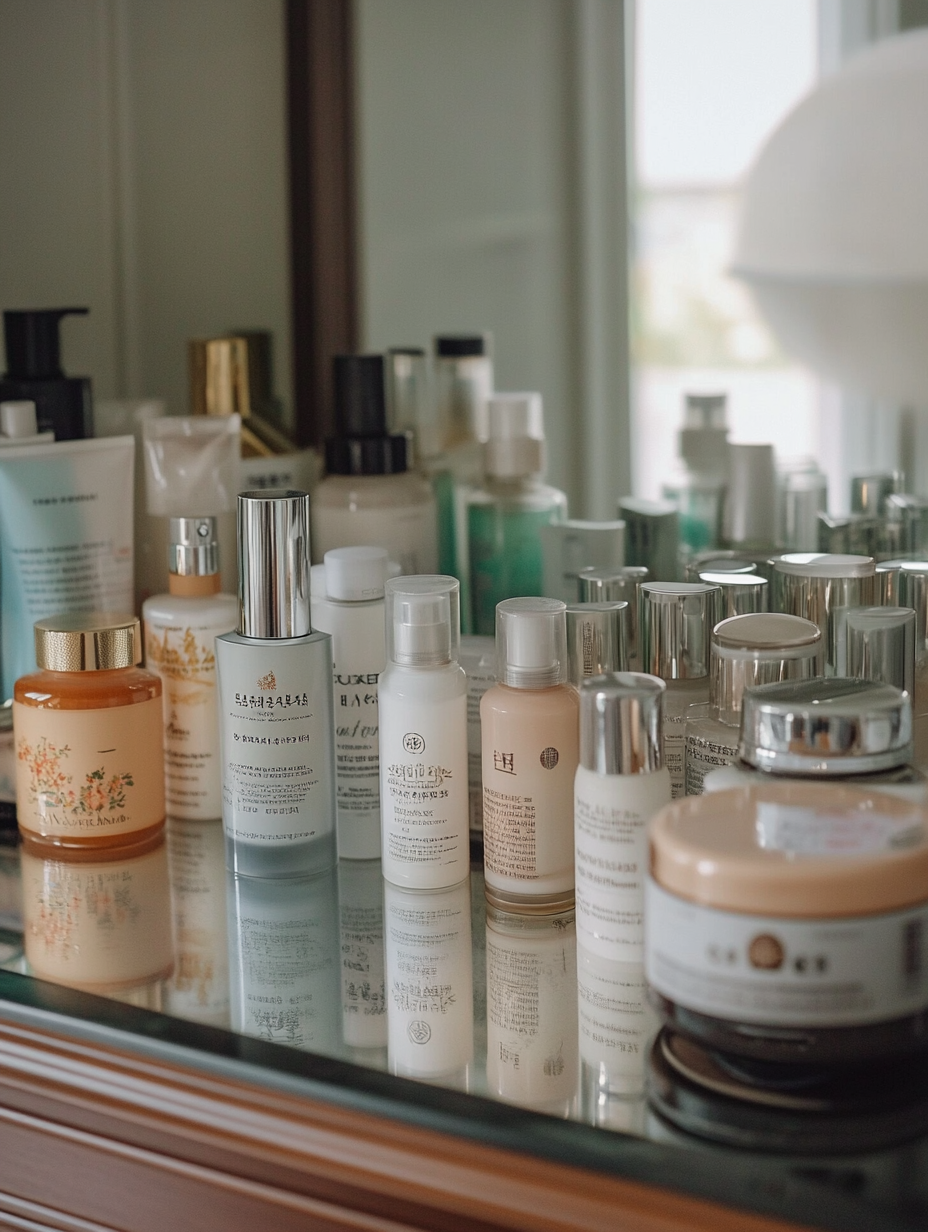
Layering Products Effectively for Maximum Benefits
The key to effective product layering is to go from thinnest to thickest consistency. This ensures that each product can penetrate the skin effectively. Here are some tips:
- Wait a few seconds between each step to allow products to absorb.
- Gently pat or press products into your skin rather than rubbing.
- If using multiple serums, apply the watery ones first, followed by the more viscous formulas.
- Don't forget your neck and décolletage area!
Tips for Introducing New Ingredients Without Overwhelming Your Skin
While it's exciting to try new products, it's important to introduce them gradually to avoid overwhelming your skin. Here's how:
- Patch test new products on a small area of skin before applying them to your face.
- Introduce one new product at a time, waiting at least a week before adding another.
- Start with using a new product every other day, then gradually increase frequency if your skin tolerates it well.
- Pay attention to how your skin reacts. If you notice any irritation, reduce usage or discontinue the product.
- Remember that consistency is key – give products time to work before judging their effectiveness.
The Future of Korean Skincare Ingredients
As we look to the future, it's clear that Korean skincare will continue to innovate and evolve. Here are some trends we're likely to see:
- Sustainable and Eco-Friendly Ingredients: With growing environmental awareness, expect to see more sustainably sourced and biodegradable ingredients.
- Personalized Skincare: Advances in technology may lead to more personalized skincare solutions based on individual skin types and concerns.
- Adaptogens in Skincare: Stress-reducing adaptogens like ashwagandha and reishi mushroom may become more prevalent in skincare formulations.
- Blue Light Protection: As we spend more time in front of screens, ingredients that protect against blue light damage are likely to gain popularity.
- Continued Focus on Skin Barrier Health: Expect to see more products designed to support and strengthen the skin's natural barrier.
Conclusion: Embracing the World of Korean Skincare Ingredients
And there you have it, folks – your ultimate guide to the magical world of Korean skincare ingredients! 🌈 From the hydrating prowess of hyaluronic acid to the soothing touch of Centella Asiatica, we've uncovered the secrets behind that coveted K-beauty glow.
Remember, the key to successful skincare is understanding your skin's unique needs and introducing new ingredients gradually. Whether you're a K-beauty newbie or a seasoned enthusiast, there's always something new to discover in this ever-evolving skincare landscape.
Korean skincare ingredients offer a beautiful blend of tradition and innovation, natural power and scientific advancement. By understanding these ingredients and how they work, you can make informed choices about your skincare routine and work towards achieving your skin goals.
So, why not take the plunge and experiment with some of these incredible ingredients? Your skin will thank you, and who knows – you might just unlock the secret to your own "glass skin" transformation. Here's to radiant, healthy skin in 2024 and beyond!
Remember, skincare is a journey, not a destination. Enjoy the process of discovering what works best for your skin, and don't be afraid to adjust your routine as your skin's needs change. After all, the most important ingredient in any skincare routine is consistency and self-care.
Have you tried any of these Korean skincare ingredients? What has been your experience? Share your thoughts and favorite K-beauty products in the comments below. Let's continue this skincare conversation and learn from each other's experiences!
Until next time, stay glowing and keep embracing the wonderful world of K-beauty! 💖✨
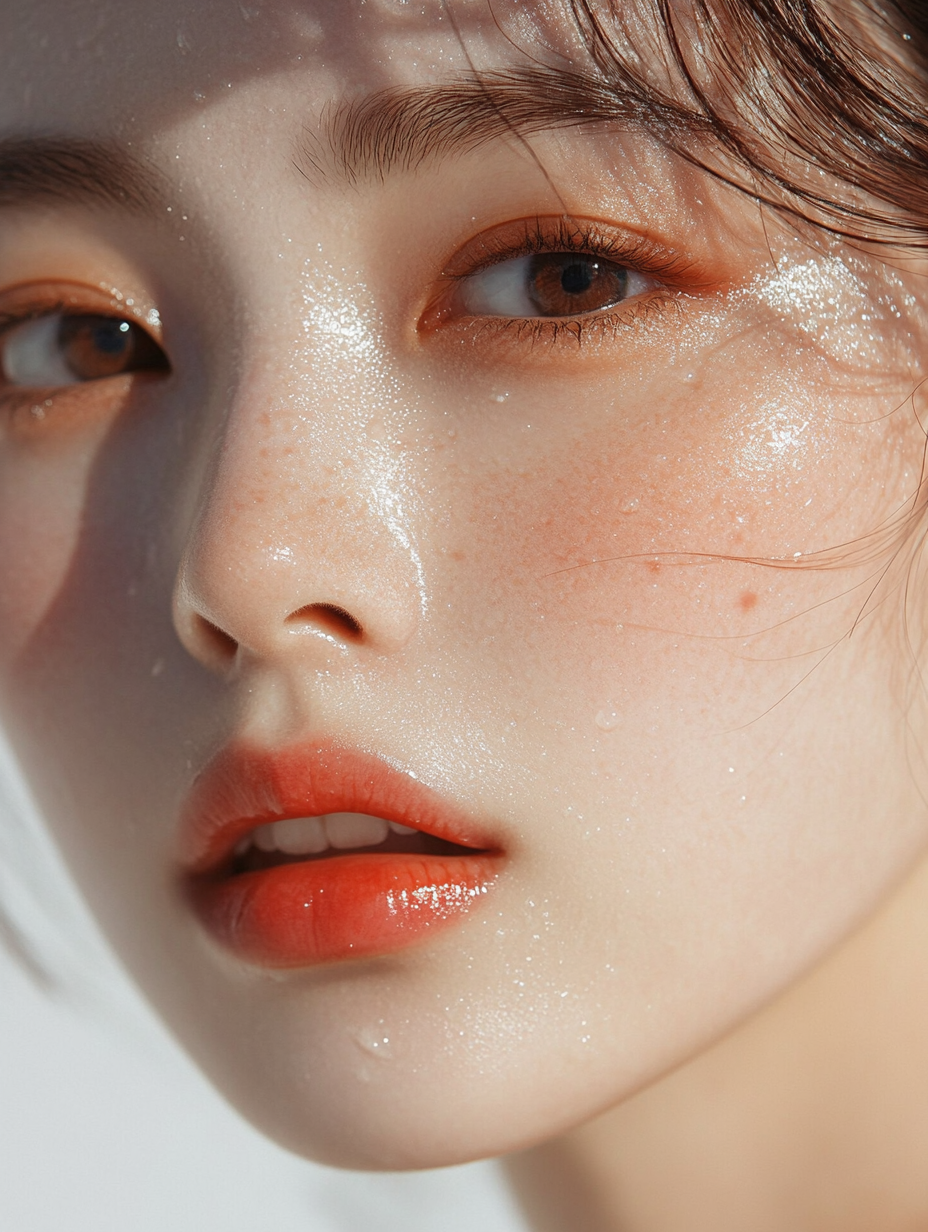
korean skincare routine k-beauty ingredients natural korean skincare hyaluronic acid benefits niacinamide in skincare fermented skincare ingredients snail mucin extract centella asiatica benefits ginseng skincare products korean anti-aging ingredients glass skin routine korean essence ingredients k-beauty hydrating ingredients brightening korean skincare korean exfoliating ingredients sheet mask ingredients korean toner ingredients korean serum ingredients propolis in skincare rice water for skin green tea in korean skincare vitamin c korean skincare ceramides in k-beauty peptides in korean skincare korean sunscreen ingredients plant stem cells skincare probiotics in korean beauty korean emulsion ingredients galactomyces ferment filtrate bifida ferment lysate licorice root extract skincare beta-glucan benefits korean collagen products ginseng anti-aging effects centella asiatica soothing properties snail mucin skin repair fermented rice water skincare korean skincare for acne k-beauty moisturizer ingredients korean eye cream ingredients bamboo extract in skincare korean skincare for sensitive skin k-beauty cleansing ingredients korean exfoliating ingredients madecassoside benefits niacinamide brightening effects hyaluronic acid hydration fermented skincare benefits korean beauty antioxidants


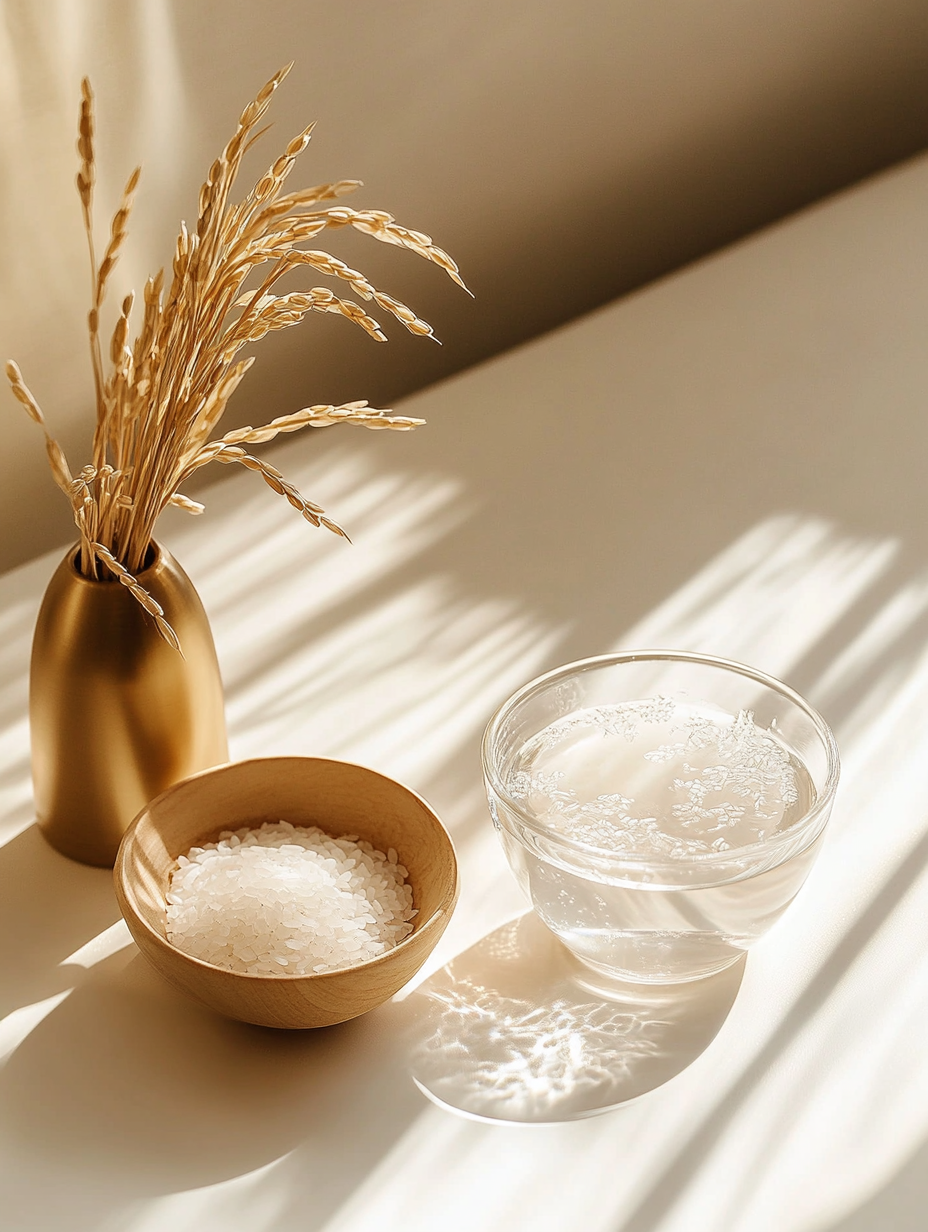
Comments ()